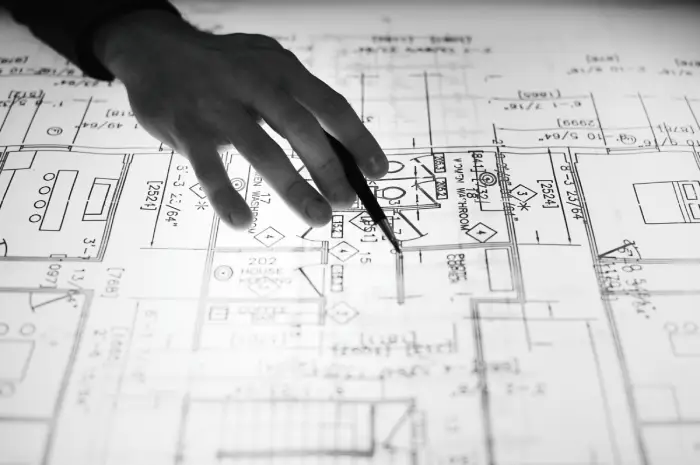Architects and engineers are inundated with the continual architectural cycle of projects after projects and this leaves a very little scope of conversation on the importance of CAD drafting standards.
Do you really think that CAD standards are important for the architectural business?
CAD drafting standards are more than just a bunch of rules created by the experienced veterans of the architectural industry. If any organization, bigger or smaller, isn’t following the CAD drafting standards, they mostly end up wasting time in redoing the work.
Majority of the commercial and residential architectural projects, like healthcare, multifamily or condominiums, take a very long period in the completion of the entire process and this leads to the involvement of multiple designers working on the same project at the different timeline. For example, the designer who started the project might not be working with the company until the end and some other designer might have to take over in the middle. To avoid the changing style and working agendas that might lead to the confusing & erroneous drafts, “CAD standards” came as the blessing for the architectural society.
What are the CAD Standards?
CAD standards are a bunch of guidelines set for the designing and drafting purposes of the CAD drawings. It is to enhance the overall productivity and create an error-free environment for the exchange of CAD documents among different architectural teams and a variety of CAD programs.
Some of the basic areas that define the CAD standards are:
- File locations
- Naming schemes
- Text styles
- Line types
- CAD software preference
- Drawing organization
- Title blocks and
- Archiving
CAD drafting standards also change with the different country locations. A commonly known example would be Europe continent, and the USA based architectural CAD drafting companies. The USA follows imperial measurement techniques, whereas Europe follows metric measurement techniques.
We have enlisted the importance of CAD drafting standards in architectural design firms.
- Consistent Drafting
Formatting of the text, line-weights, leaders, title-block, dimensions, and drawings should be consistent throughout the project.
The text font size of the CAD drawings should be similar all over and the same text block with correct details of the date and phase should be filled.
If a particular elevation has a stone pattern (used for showcasing the material purpose) in gray color, this should have the same color and pattern in the other drawings as well. Let’s say if the color changes to brown, then the next designer would analyze the pattern to figure out the reason for the change in color and this could be a sign of discrepancy or the change in scope for the elevation.
- Keeping Designers at the Same Page
Every single drafter or designer should understand the draft files at any time. They should know the type and kind of the drawing which was compiled together. The colors or layers should follow the architectural drafting standards detailed in the specified template. If multiple CAD drafters are working on the same project, the outcome should look like a single person’s creation following the same standards.
- Complete Time Saver
Architectural CAD drafting standards save a lot of time for the designers and drafters. If everyone is following the same standards, this makes the navigation way easier for locating and drafting the project files.
If architectural design firms do not follow these standards, then drafters start working on projects with their individual parameters and design the results which could be chaotic for another firm. Subsequently, the companies end up involving more time in untangling these projects.
- Easier to Train the Drafters
Architectural drafting firms create CAD drafting standards manual for the new drafters in the team. So that, the new members receive clear standardized guidelines from the beginning and adhere to them while working on their projects without unnecessary hassle.
- Outsourcing Becomes Convenient
Stakeholders can easily outsource their drafting standards to the vendors and sub-contractors. This makes it easier for everyone to stay on the same page.
Some of the parameters that should be included in the CAD standard list are:
- Outsourcing to the CAD Drafting vendors
- CAD files formats and versions
- Created Templates for the usage or reference
- State and explain acceptable delivery formats
- Standardized detailed libraries/block
- Organized paths
- PDF documents with block names/pictures
- Create palettes of the tool to insert standard details/ blocks
Conclusion
The importance of CAD drafting standards in the architectural industry grows with the growing advancements in this sector. Companies implement standards from the beginning but shift their focus on the other things like the need for more output and this creates a chaotic project. BluEntCAD understands your need and delivers you exactly what has been asked for.
BluEntCAD is a CAD drafting and design company with multiple offices in North America. We have a highly skilled team of drafters and designers who adhere to every standard outlined by the industry and the architectural firms. To know more about this, contact us.
Maximum Value. Achieved.







 The Features Buyers Want in London Properties
The Features Buyers Want in London Properties  Building Design for Extreme Cold: The Architecture of Climate Change
Building Design for Extreme Cold: The Architecture of Climate Change  Contractor vs Subcontractor vs Builder: What’s the Difference?
Contractor vs Subcontractor vs Builder: What’s the Difference?  Mansion vs McMansion: Is There Really a Difference?
Mansion vs McMansion: Is There Really a Difference?